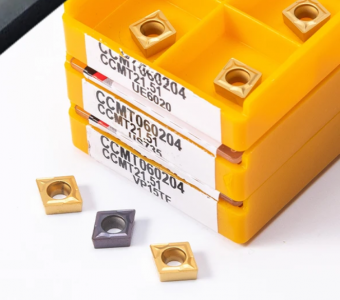- Joined
- Apr 8, 2021
- Messages
- 155
Hello.
I had a 304 stainless steel pipe. OD 16mm and ID 12mm. I need to increase the internal diameter to around 12,35. The length is 75mm the objective is tu fit inside a heater cartridge with aluminium casing.
I have a small cheap mini lathe (no the cheapest one, but not the best). I'm using the biggest boring bar that fits in the hole and fixed to the QCTP to allow making each cut in 1 pass, so the rigidity is not the best but it is always the same.
I tried using adjustable hand reamer, but is not very good working in stainless (it is not worth to buy a good one, I need it just for this project), so I think I can only do it with the boring bar. I'm using these inserts

In the past, these time of cuts weren't the best, so this time I'm planning to approach to it's final diameter veeeery slow. Making more a more passes at the same depth of cut to smooth the surface and try to finish with a scouring pad.
I mean, when I make a pass, I remove material, but if y repeat the pass without increasing the depth of cut I keep removing material, bit every time less and less. The objective is to make the best fit possible and maximize the surface contact between the inside of the pipe and the heater cartridge.
What do you think? Any idea or advice?
Thank you
Best regards
Edited: I add again the picture of the inserts
I had a 304 stainless steel pipe. OD 16mm and ID 12mm. I need to increase the internal diameter to around 12,35. The length is 75mm the objective is tu fit inside a heater cartridge with aluminium casing.
I have a small cheap mini lathe (no the cheapest one, but not the best). I'm using the biggest boring bar that fits in the hole and fixed to the QCTP to allow making each cut in 1 pass, so the rigidity is not the best but it is always the same.
I tried using adjustable hand reamer, but is not very good working in stainless (it is not worth to buy a good one, I need it just for this project), so I think I can only do it with the boring bar. I'm using these inserts

In the past, these time of cuts weren't the best, so this time I'm planning to approach to it's final diameter veeeery slow. Making more a more passes at the same depth of cut to smooth the surface and try to finish with a scouring pad.
I mean, when I make a pass, I remove material, but if y repeat the pass without increasing the depth of cut I keep removing material, bit every time less and less. The objective is to make the best fit possible and maximize the surface contact between the inside of the pipe and the heater cartridge.
What do you think? Any idea or advice?
Thank you
Best regards
Edited: I add again the picture of the inserts


